#Caroline Lee Bouvier Radziwill
Text
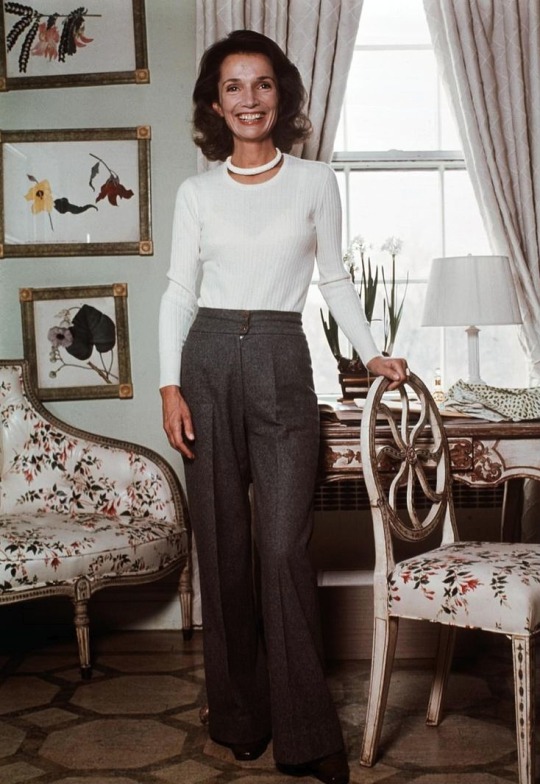
Happy heavenly birthday to Caroline Lee Bouvier Radziwill ~ March 3, 1933🎂🎂🎂
35 notes
·
View notes
Text
Princess Caroline "Lee" Bouvier Radziwill
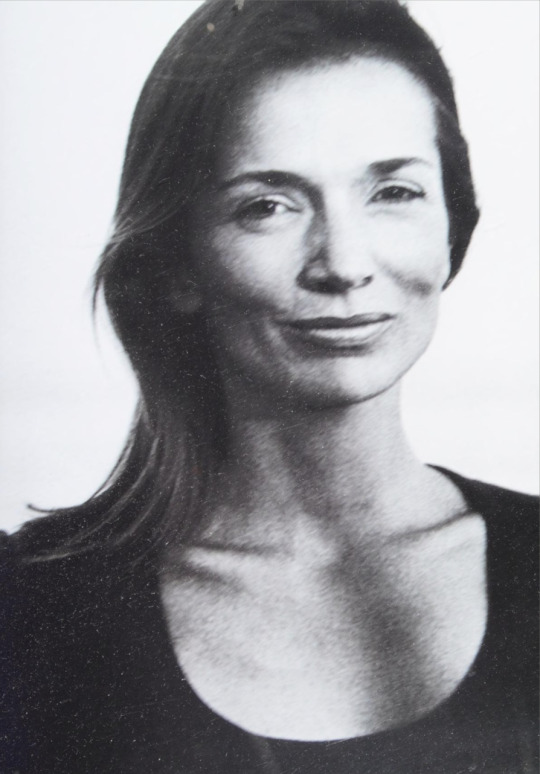
photos from Radziwill's photo memoirs Happy Times (2000), and Lee (2015)
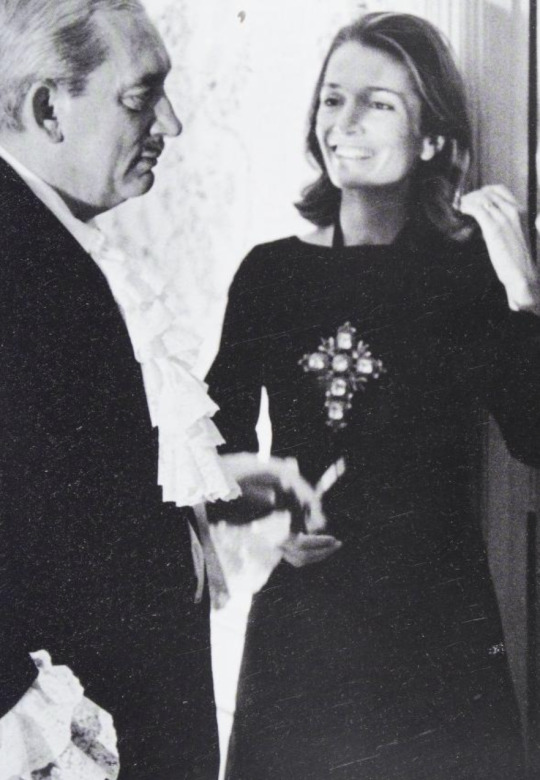
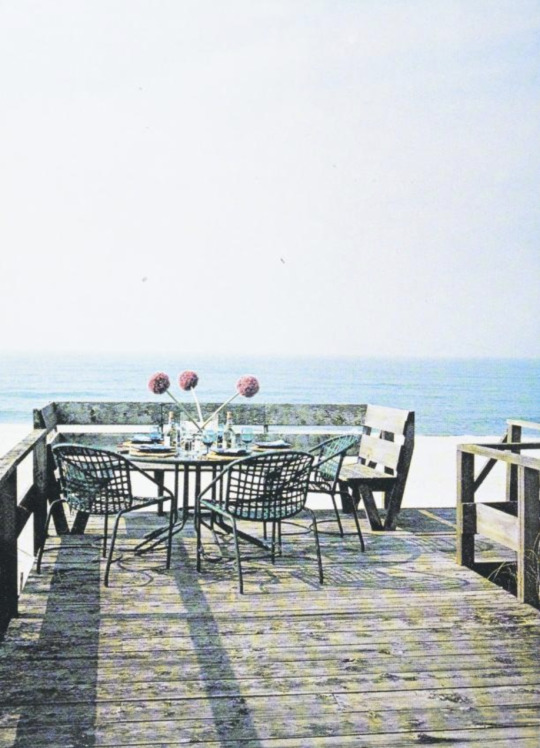
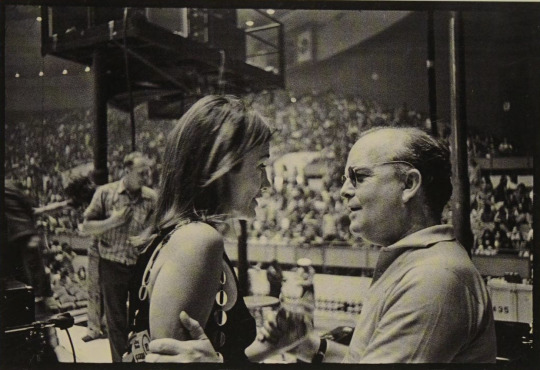
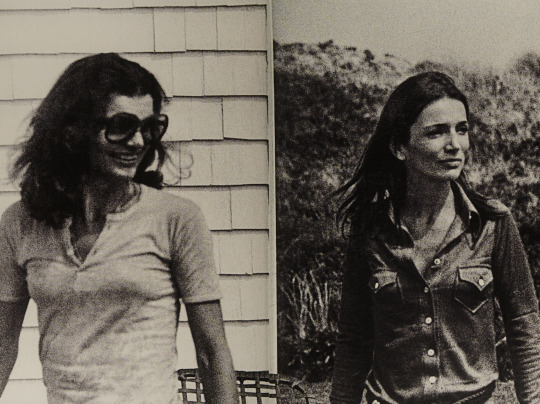
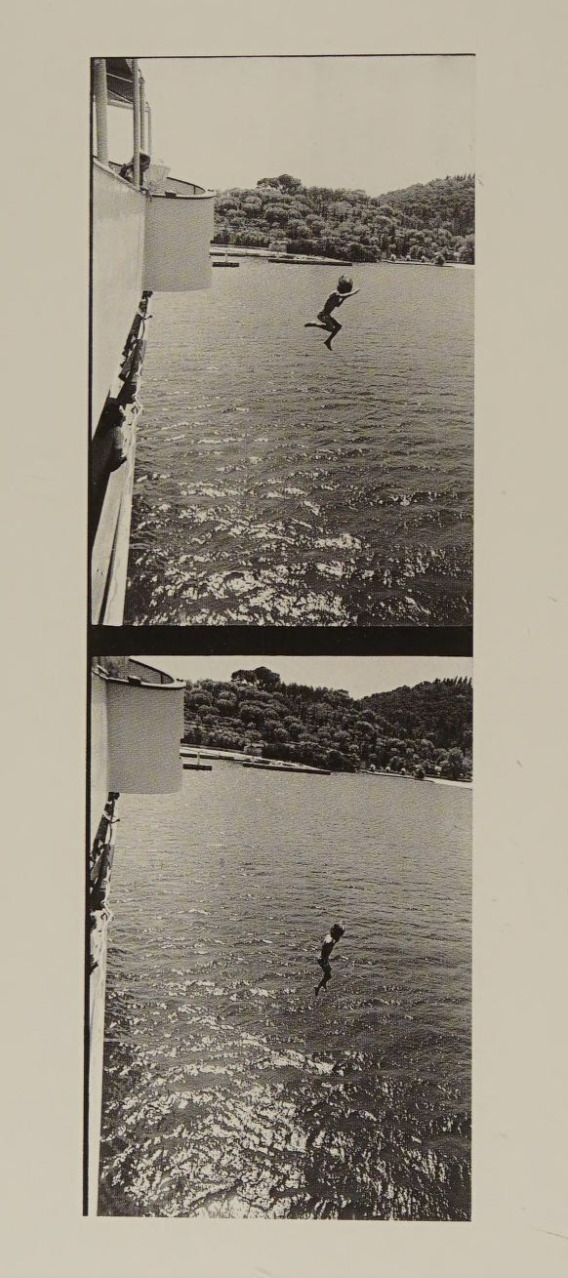
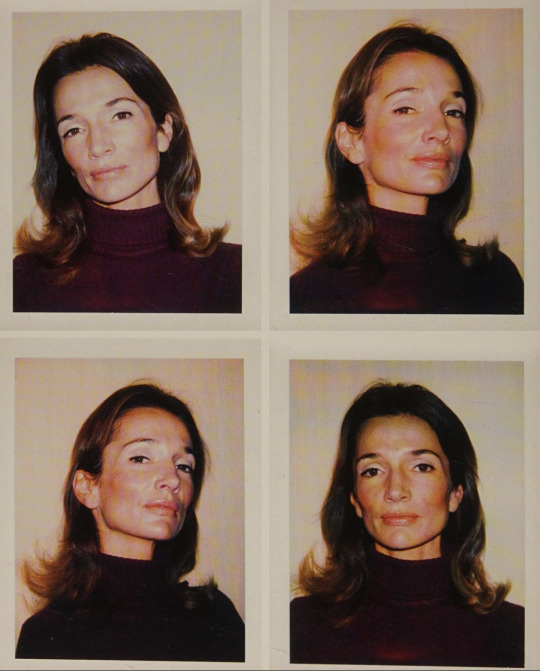
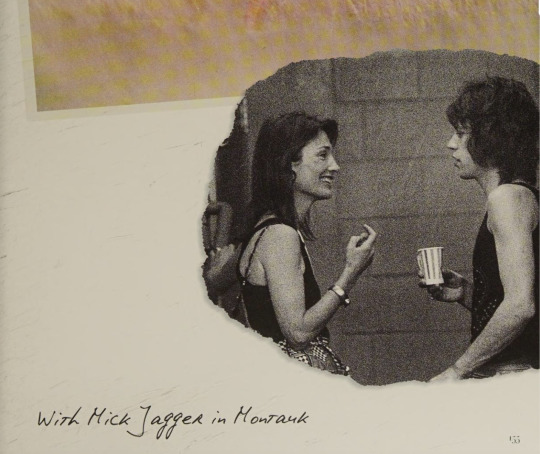

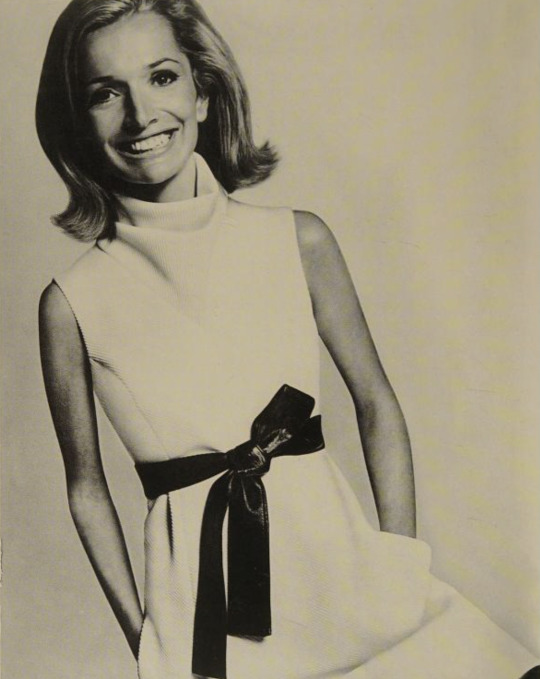
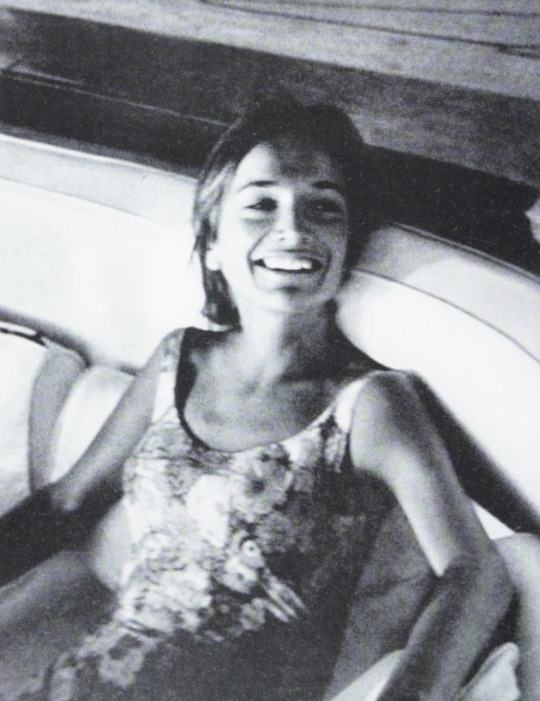
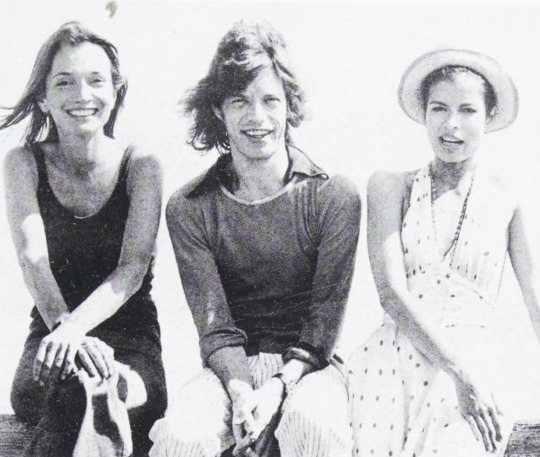

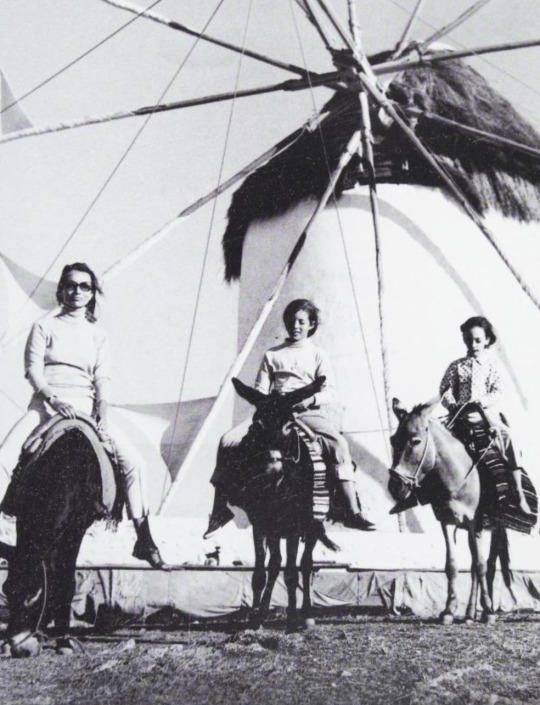

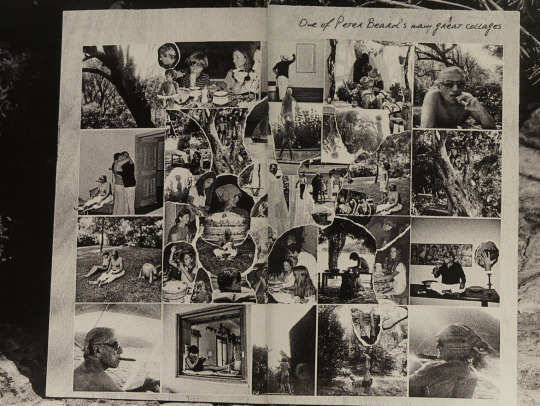



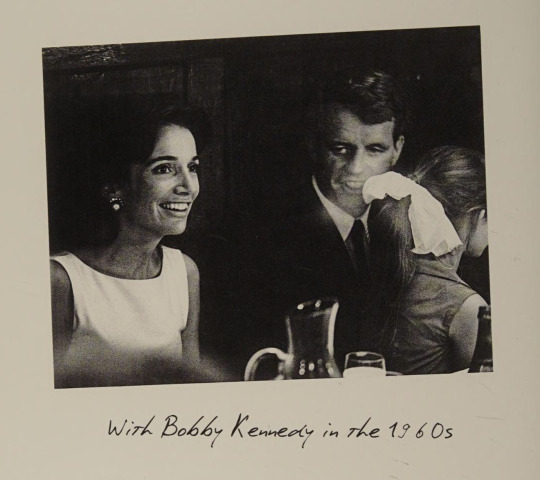
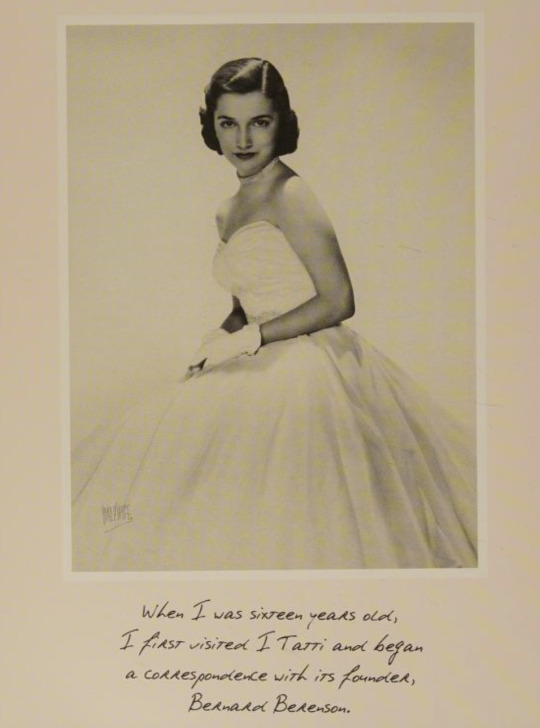

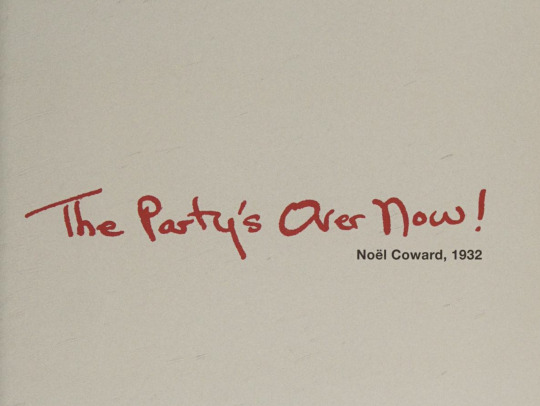
#lee radziwill#peter beard#montauk#south hampton#grey gardens#bouvier#kennedy#radziwill#princess lee radziwill#jackie o#jackie kennedy#andy warhol#truman capote#cecil beaton#bobby kennedy#caroline kennedy#mick jagger#bianca jagger
11 notes
·
View notes
Text

ORIGINAL CAPTION: Royal Guardsmen at Buckingham Palace watched by, left to right, John F Kennedy Junior (saluting) and his sister Caroline, his cousins Anthony and Anna Radziwill, his mother Jacqueline (in blue), the president's widow and his aunt, Princess Lee Radziwill, while touring London on 13th May 1965. (Photo by Ray Bellisario/Popperfoto via Getty Images/Getty Images)
#jackie kennedy#jacqueline bouvier kennedy#caroline kennedy#john f kennedy jr#jfk jr#lee radziwill#lee bouvier radziwill#anthony radziwill#christina radziwill#kennedy family#the kennedys
15 notes
·
View notes
Text


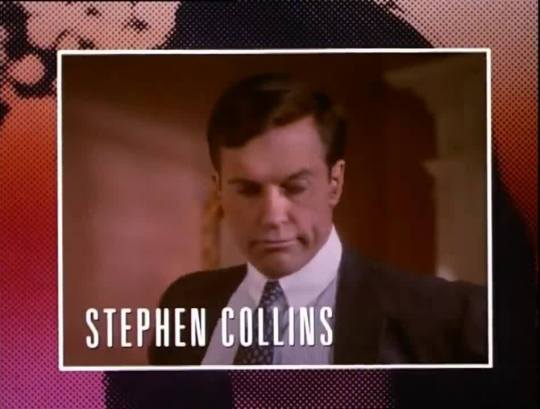
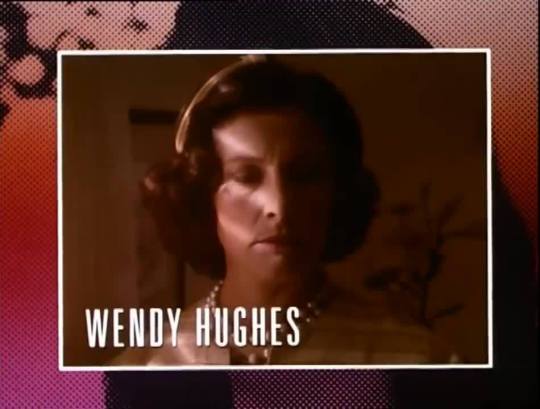



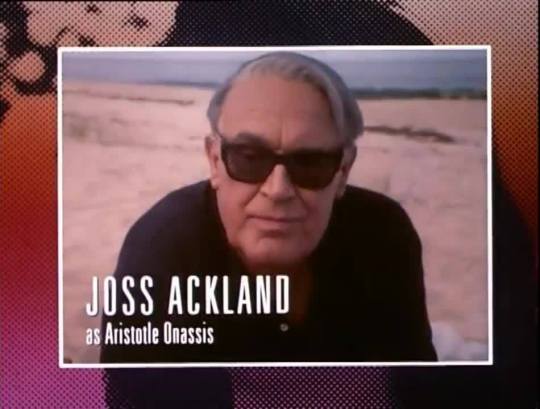

A Woman Named Jackie - NBC - October 13 - 15, 1991
Biography (3 episodes)
Running Time: 246 minutes total
Stars:
Roma Downey as Jacqueline Bouvier Kennedy Onassis
Stephen Collins as John F. Kennedy
William Devane as John Vernou "Black Jack" Bouvier III
Joss Ackland as Aristotle Onassis
Wendy Hughes as Janet Lee Bouvier
Ashley Crow as Caroline Lee Bouvier Radziwill
Boyd Gaines as Hugh Dudley "Yusha" Auchincloss
Tim Ransom as Robert F. Kennedy
Lisa Eichhorn as Dr. Jordan
Rosemary Murphy as Rose Fitzgerald Kennedy
Andrew Buckley as John F. Kennedy Jr.
Nadia Dajani as Christina Onassis
Sarah Michelle Gellar as Teenage Jacqueline Bouvier
Josef Sommer as Joseph P. Kennedy Sr.
Eve Gordon as Marilyn Monroe
Brian Smiar as Lyndon B. Johnson
Bob Gunton as Hugh D. Auchincloss
Jessica Tuck as Lorraine Murphy
Anna Thomson as Ilona
#A Woman Namesd Jackie#TV#Biography#NBC#1991#1990's#Roma Downey#Stephen Collins#William Devane#Joss Ackland#Wendy Hughes#Ashley Crow#Boyd Gaines#tim Ransom#Lisa Eichhorn#Rosemary Murphy
2 notes
·
View notes
Text
Lee Radziwill Net Worth: Popularity In The World Of Fashion He Was 85 Years Old. She Is Dead!
The American socialite, PR exec, and decorator Caroline Lee Bouvier, formerly Canfield, Radziwi, and Ross, was more well-known as Princess Lee Radziwill. ON 3 MARCH 1933, IN THE U.S. CITY OF Manhattan, NEW YORK, HE WAS BORN. She was the President's sister-in-law and the younger sibling of Jacqueline Bouvier Kennedy.
Lee Radziwill Net Worth
As of the time of her passing in 2019, American socialite, executive, and actress Lee Radziwill were worth $50 million.
Lee Radziwill into the world in Southampton, New York in March of 1933. She was well-known as the sister of ex-First Lady Jacqueline Kennedy Onassis and the sister-in-law of President John F. Kennedy. Must read about this article Marshawn Lynch Net Worth.
Since her marriage to Prince Stanislaw Radziwi in 1959, she has been considered a member of the Polish nobility. She tried her hand at acting for a while and also spearheaded the creation of the seminal 1975 documentary Grey Gardens.
https://twitter.com/wikiglobals/status/1097159287707705344
There was a ceremony to induct Radziwill into the International Best Dressed List Hall of Fame in 1996. Radziwill worked for Giorgio Armani of Italy as a public relations officer.
She wed Prince Stanislaw Albrecht Radziwill, Herbert Ross, and two more men. She was the mother of two, one of which was the future king of Poland, Anthony Stanislas Albert Radziwill. Carole Radziwill, Anthony's wife, shot to fame many years later as a cast member on "The Real Housewives of New York." You might also be interested to read about Erika Alexander Net Worth.
Michael Canfield was Lee Radziwill's first husband. It was in England that she met her future husband, Stanislas Radziwill. They were quickly divorced and married after the meeting. In 2019, Lee Radziwill passed away on February 15th at the age of 85.
Popularity In The World Of Fashion He Was 85 Years Old. She Is Dead.
Lee Radziwill, sister of Jacqueline Kennedy Onassis, has passed away at the age of 85. This past Friday, February 15, Radziwill reportedly passed away, as reported by WWD. At this time, we have no information to suggest a cause of death.
Radziwell, a longtime regular in the front row at New York Fashion Week, will be fondly remembered for her impeccable taste.
"She epitomized grace and beauty; she was an authentic icon," "According to WWD, Christian Dior's PR head Mathilde Favier made the following statement. Favier and Radziwill's husband is rumored to have met through the fashion designer. We hope you like this article Lisa Barlow Net Worth.
"As a beautiful woman, could easily adjust to any environment. She never wore clothes that were too revealing or too drab... Because she was a fashion pioneer, she exuded timeless grace and was a source of inspiration for generations. This is a tragic development. An era has come to a close.

Lee Radziwill Net Worth
Caroline Lee Bouvier, afterward Radziwill, was the daughter of stockbroker John Vernou Bouvier III and socialite Janet Lee Bouvier. Her sister's marriage to John F.
Kennedy (and subsequent status as First Lady of the United States) catapulted her into the fashion spotlight, and the two sisters became one of the most well-known and frequently photographed pairs of the 1960s.
At the time, Radziwill was most known for her role as a public relations officer for Armani, though she did dabble in acting (in films like Laura) briefly. Must read about Cody Longo Net Worth.
Anna Christina Radziwill, Radziwill's daughter, will carry on the family name. Anthony Radziwill, her son, died in 1999. Funeral arrangements for Lee Radziwill have not been made public, but you can rest assured that her loved ones and the whole fashion industry are devastated by her passing.
https://youtu.be/poN3YMrtN8E
Description
The documentary “Lee Radziwill Net Worth” is a must-see for every lover of the show. The show is about a celebrity and the details of his net worth will make you go “Geeeeez” (even if you don’t like this expression) while viewing it.
Its stunning visuals and animation effects are the result of meticulous design and development. It will keep you entertained for quite some time, so if you haven’t seen it yet, please do so and then rate it and share your thoughts below.
If you like this article, follow our website serveupdate.com & don’t forget to follow our social media handles.
Read the full article
0 notes
Text
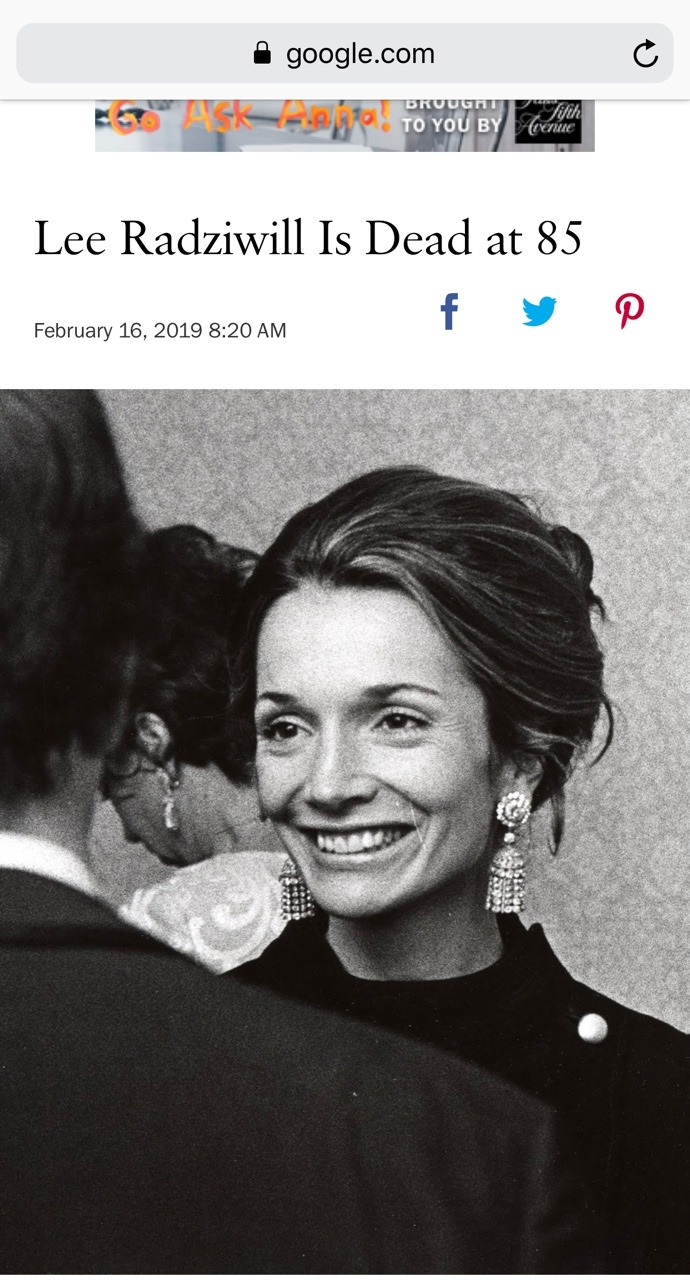
R.I.P. Lee 3/3/1933-2/15/2019
45 notes
·
View notes
Text
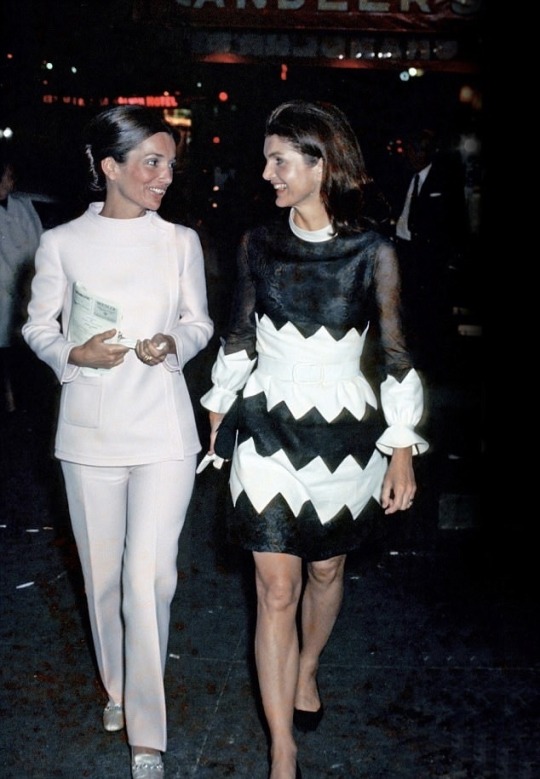
Sisters Jackie Kennedy & Lee Radziwill
“Born to dazzle, they were the most famous sisters in the world, the Bouvier girls—Jacqueline and Caroline Lee. Jackie was studious, dark-haired, athletic, and reserved. Lee—three and a half years younger—was light-haired, mischievous, adventurous.”
- Sam Kashner
#vintage#icons#1960s#jackie kennedy#the kennedys#john f kennedy#60s#jaqueline#jfk#jackie o#sisters#60s vintage#american vintage#lee radziwill#jackie bouvier#jaqueline kennedy#style icon#vintage style
37 notes
·
View notes
Text
More Family History Of JFK Jr, Also the Royal Wedding!
Chapter 2 - Family History and The Royal Wedding
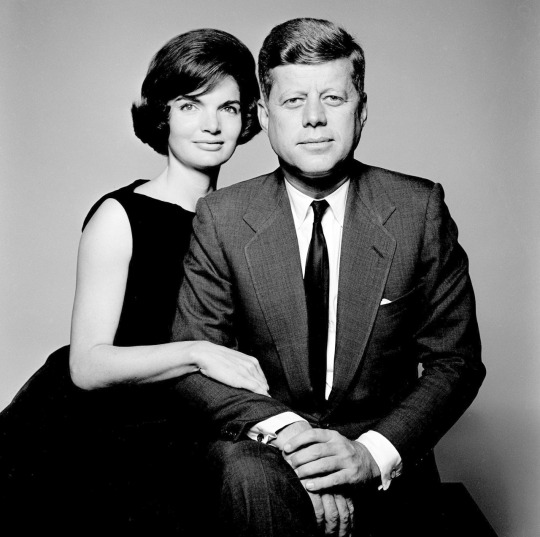
Jacqueline Lee Kennedy Onassis is also known as Jackie Kennedy , Jacqueline Bouvier Lee Kennedy Onassis, Jackie Bouvier ( Maiden name) and First Lady of the United States of America.
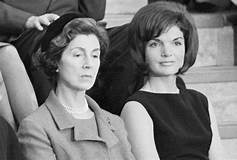
Jackie’s parents and JFK Jr’s grandparents are John Vernou (Jack) Bouvier III and Janet Lee Auchincloss. Lee comes from Jackie’s grandparents on her mothers side, James T Lee and Margaret A Lee. She was born July 28 1929 in New York USA. As a child she developed the interest she would still relish as an adult: horseback riding , writing, and painting. She graduated from George Washington University in 1951 and took a job as a reporter - photographer at the Washington Times- Herald. She notably covered the coronation in (1952) of Elizabeth II. Jackie Kennedy’s occupations was a journalist, book editor, First Lady of the United States(1961-1963) and a consulting editor in 1975.
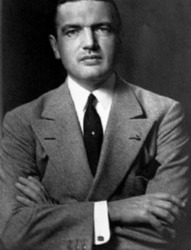
Jackie also had three step father’s that was in her life because her mom Janet and John got a divorce in 1940 and they had two children together. Jackie Lee Bouvier and Caroline Lee Bouvier. Janet then married Hugh D Auchincloss in 1942, later they divorced and they had two children together. James Auchincloss and Janet P Auchincloss (Rutherford). Also Janet first met Bingham Willing Morris in 1921, got engaged August 1979, got married October 25 1979.

Jackie Kennedy’s Birth parents passed away in 1989 and 1957. Jackie Kennedy’s siblings are and would be JFK Jr’s aunts and uncles. Caroline Lee Bouvier Radziwill her sister. James Auchincloss her half brother, same mom different dads. Janet Rutherford is her half sister, same mom but different dads.
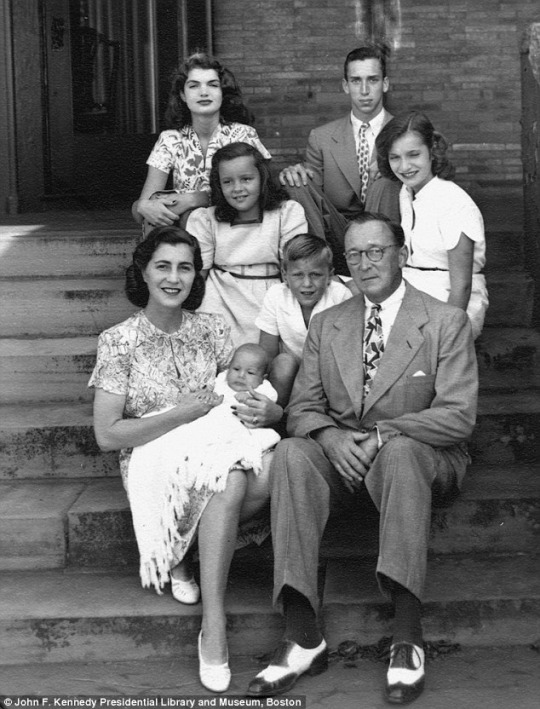
Jackie Kennedy and John F Kennedy got married the morning of September 12 1953. There was more then 800 guests including many notable individuals.
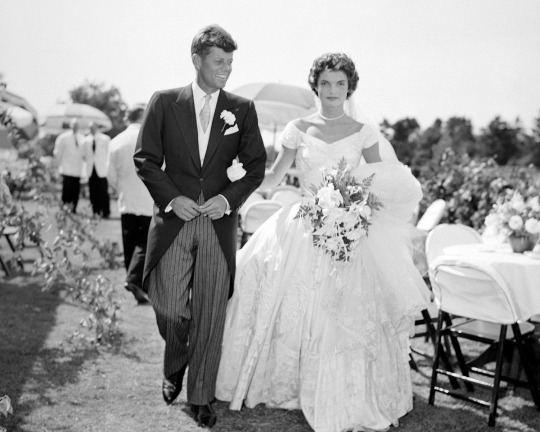
The bride, given in marriage by her stepfather, Hugh D. Auchincloss, wore a dress of ivory tissue silk, with a portrait neckline, fitted bodice, and a bouffant skirt embellished with bands of more than fifty yards of flounces. Her rosepoint lace veil, worn first by her grandmother Lee, was draped from a tiara of lace and orange blossoms. Jacqueline wore a choker of pearls and a diamond bracelet that was a gift from the groom. The bride’s bouquet was of pink and white spray orchids and gardenias.
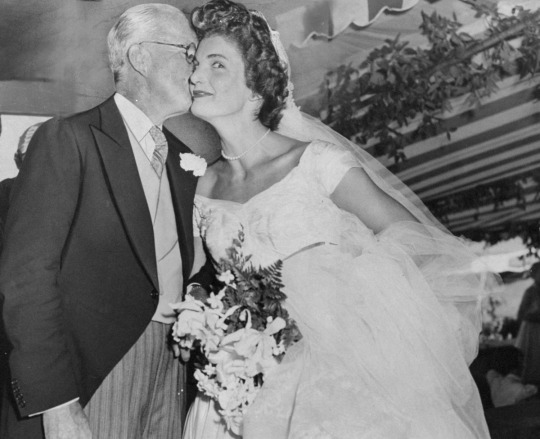
The bride's attendants, dressed in pink taffeta, included: her sister, Lee (Mrs. Michael T. Canfield) as matron of honor; her stepsister Nina G. Auchincloss as maid of honor; and ten bridesmaids, among them the groom’s sister Jean and sister-in-law Ethel, and the bride’s former boarding school roommate, Nancy Tuckerman. Half sister Janet Auchincloss was flower girl and half brother James Auchincloss served as a page. Senator Kennedy’s best man was his brother Robert and among the ushers were brother Edward, brother-in-law Sargent Shriver, cousin Joe Gargan, brother-in-law Michael Canfield, friends Lem Billings, Red Fay, and Torbert Macdonald, Senate colleague George Smathers, and Charles Bartlett, who had introduced the couple.

The ceremony was performed by Archbishop Cushing, a friend of the Kennedy family, and he was assisted by four other priests, including the former president of Notre Dame and the head of the Christopher Society. Before the mass, a special blessing from Pope Pius XII was read. Tenor soloist Luigi Vena from Boston sang Gounod’s Ave Maria. The reception was held on the terrace of the 300 acre Auchincloss oceanfront estate, Hammersmith Farm, for more than twelve hundred guests. The wedding cake, four feet tall, was ordered by Joseph P. Kennedy. Meyer Davis and his orchestra played under a huge canopy.
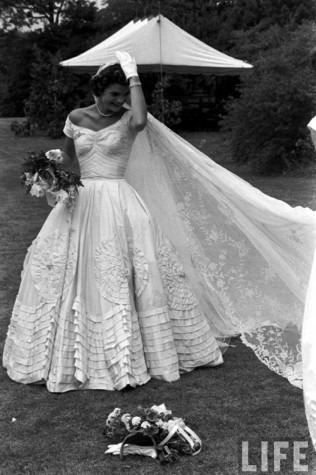
Just a little bit more info from the Royal Wedding- JFK and Jackie was married for seven years before having JFK Jr and married three years before having there first born daughter. They Announced there engagement in June 1953, and married three months later. It became a huge event. It wasn’t everyday that one of the country’s most eligible bachelors - A Kennedy , nonetheless - says “ I Do.” It was crisp , sunny day. A breeze whipped up whitecaps in the bay as waves of publicity powered by the groom’s father, Ambassador Joseph P Kennedy, drew crowds to the streets. Bride was 24 and the groom was 36. Hundreds of guests included Senators and Congressmen, Boston and Massachusetts political figures and Hollywood Luminaries. John F Kennedy’s best man was his brother Bobby. Hugh Auchincloss walked Jackie down the isle. Her sister Lee ( Caroline) was matron of honor. The reception was at an Auchincloss residence, Hammersmith Farm. Then the married couple went on there way to Acapulco for a short honeymoon.
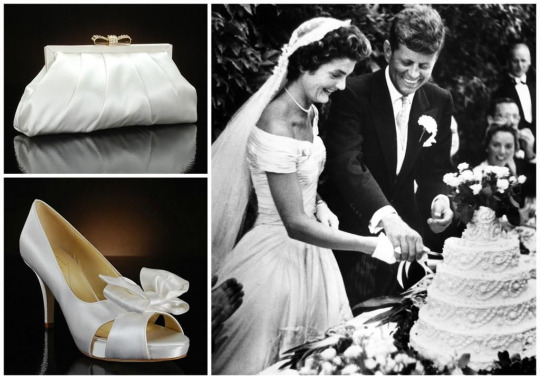
To be Continued -
* Warrior32*
5 notes
·
View notes
Photo
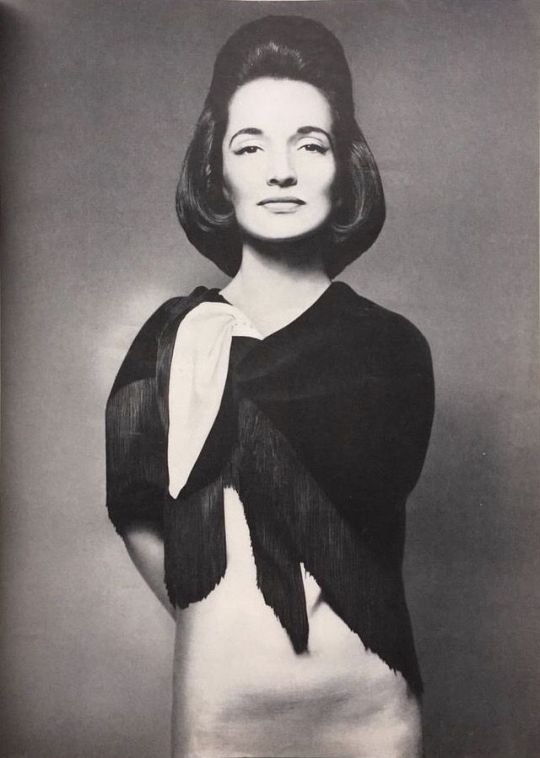
Caroline Lee Bouvier (Canfield, Radziwill, Ross)
by Avedon, Harper's Bazaar June 1961
27 notes
·
View notes
Text
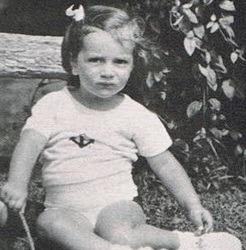
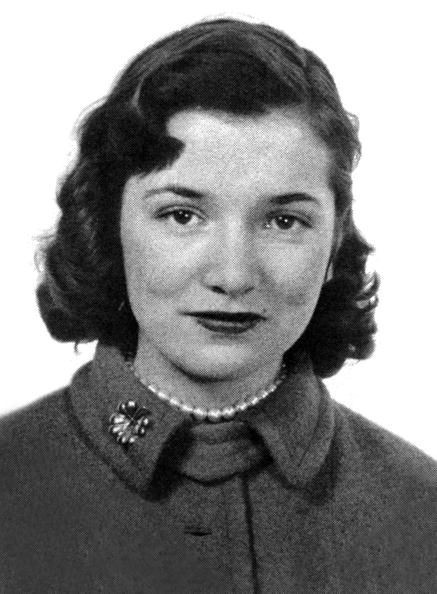
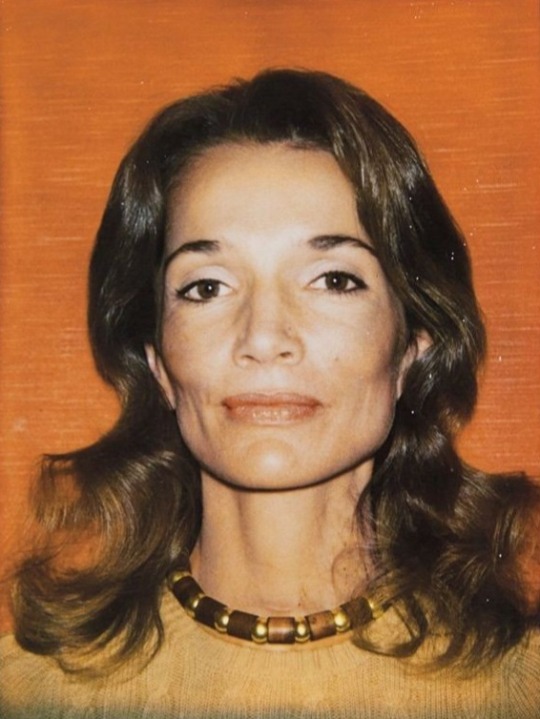
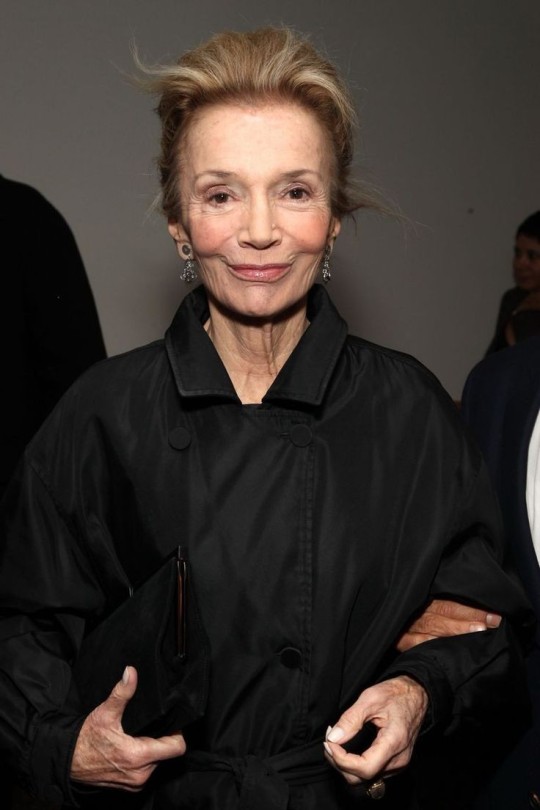
Happy heavenly birthday to Caroline Lee Bouvier Radziwill ~ March 3, 1933🎂🎂🎂
7 notes
·
View notes
Photo
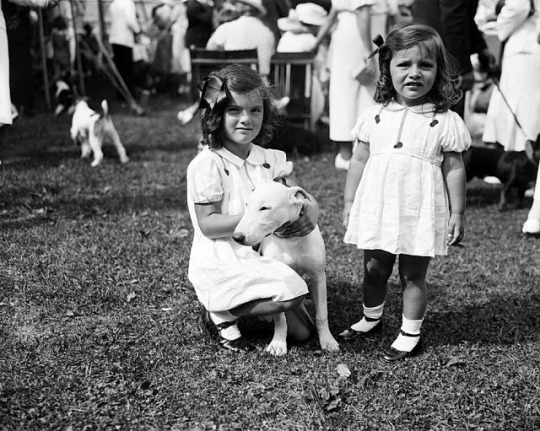
THE SISTERS
Jacqueline Bouvier, later Kennedy and First Lady of The United States of America; and Caroline Lee Bouvier, later Princess Radziwill
#the sisters#jacqueline kennedy onassis#lee radziwill#usa#eeuu#united states of america#american aristocracy#american nobility#american royalty#royal#royals#royalty#royaltyedit
11 notes
·
View notes
Text
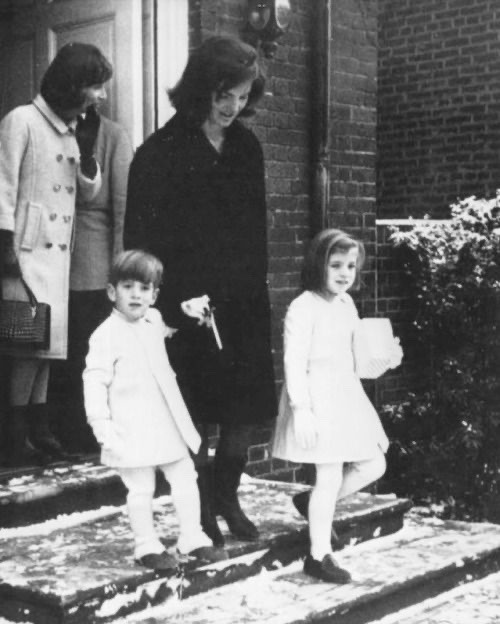
Jackie Kennedy, Caroline Kennedy, and John F Kennedy Jr leave their Georgetown home to spend Christmas in Palm Beach with other members of the Kennedy Family - December 1963
#jackie kennedy#jacqueline bouvier kennedy#caroline kennedy#john f kennedy jr#jfk jr#kennedy family#the kennedys#lee radziwill
7 notes
·
View notes
Text
Favorite Son

It was madness, even by Bloomingdale’s standards. The customers that late-November lunchtime were possessed by an urgency that transcended mere pre-Christmas shopping lust. Suddenly, TV lights came on and cameras started snapping like piranhas as the day’s hottest item, John Fitzgerald Kennedy Jr., the son of America’s thirty-fifth president, stepped onto a platform. Women screamed.
“It was mass hysteria,” one store worker says. “Poor man. I don’t think he had any idea.” Kennedy looked amazed and none too happy. “Oh, dear,” he said as he joined cousins Ted Kennedy Jr. and Willie Smith, Willie’s mother, Jean Kennedy Smith, and Lauren Bacall on the store’s loge level.
Very Special Arts, a Kennedy charity, was behind this sale of boxed Christmas ornaments produced by the retarded in Third World countries. But the TV crews and the screaming women and the pushing paparazzi didn’t care about that. They didn’t care about Betty Bacall, either, or the other Kennedy cousins — all associate trustees of the Joseph P. Kennedy Foundation who had funded the program. Says the Bloomingdale’s employee, “They wanted John.”
Kennedy took the microphone. “I hope you’ll all buy a few boxes,” he said. “I’m here to sell boxes, and that’s what I want to get to do.” Of course, by doing that-or, more precisely, by autographing boxes for a few minutes-he got the ornaments mentioned on seven local news shows and Entertainment Tonight. Jill Rapaport, a perky Channel 2 News reporter, even got a brief interview. “It’s really the boxes they should be coming for, not us,” Kennedy told her. Then he got boxed in himself as Rapaport asked how it felt to be one of the world’s most eligible bachelors. “C’mon,” Kennedy pleaded, eyes and hands turning upward. “1 dunno.” He glanced away from the microphone hopelessly. Finally, visibly embarrassed, he said, “It feels okay.” Cut to Rapaport happy-talking in the studio later. “Kinda cute, huh?” she said to the camera.
Although Bloomingdale’s sold almost $50,000 worth of ornaments that day, John Kennedy, 28, considered the appearance disappointing. “We didn’t want it to turn out the way it did,” says Kathy Walther, a Very Special Arts executive. “It was very obnoxious from the second he walked in. John hoped it would be more substantive.”
Unfortunately, substance isn’t ‘the first thing that comes to mind when most people think about John F. Kennedy Jr. First, of course, comes the awful, indelible memory of the little boy in a blue coat and short pants, saluting his father’s bronze coffin.
That image alternates with others not so sober: Kennedy pumped-up and shirtless as People magazine’s “Sexiest Man Alive.” Kennedy linked in the columns with an enviable parade-Brooke Shields, Madonna, Daryl Hannah, Molly Ringwald, Princess Stephanie of Monaco.
Those images melded at his political coming-out party, last summer’s Democratic Convention-where John F. Kennedy Jr., tabloid celebrity, was transformed into the living embodiment of a nation’s not-quite-impossible dream: that it will wake up one morning with another JFK in the White House. Uncle Ted Kennedy passed the torch himself when he had John introduce him to the delegates, and though the nephew’s speech didn’t rattle the rafters, there was a surge of emotion in the hall. This was the first time John had ever acted the part of “a Kennedy” on a national stage. And the moment suggested that he could become the ultimate postmodern politician-a blank canvas for fantasies of national destiny.
* * *
The boy in the blue coat is grown up now, and, whether he likes it or not, people still have their eyes on him. He doesn’t like it at all, and friends insist that his life is a quest for anonymity and normality. He may never find privacy (“He’s never known life any different,” says a friend), but he’s won the battle to be normal. Aggressively normal. “Disgustingly normal,” says a friend.
He is also understandably reluctant to give anything away, having already given so much. Kennedy “is trying to have an open life,” says Faith Stevelman, who met him on their second day of law school, in 1986. “He sure turned out to be completely different than I expected. The press makes him out to be a narcissistic celebrity brat, but he’s not. People want to see him that way, because of his father, because of his name, because he’s handsome, but-praise to him-he has a life that’s much more real than that. He likes being in the world.”
He doesn’t like publicity, though. “It curtails his freedom,” Stevelman says.
So, aside from lending his name to good causes, he’s done nothing to attract attention to himself. He’s given only one print interview in his life, to the New York Times, and it wasn’t particularly revealing. Not speaking to reporters “has always been a habit,” says his aunt Lee Radziwill. “We’re not going to start now.”
One former family intimate describes the Kennedy attitude as “a conspiracy of silence, mandated from above. But when they want to get the message out, they do.” John Kennedy declined to be interviewed for this story. But there’s a message his friends want to get out, so many of them cooperated, as did former coworkers and bosses and a few Kennedy-family members.
They are setting the stage for what a Kennedy Foundation executive describes as “John emerging into the public sphere.” After having worked for New York City, a nonprofit developer, the Reagan Justice Department, and apolitically connected Los Angeles law firm, the man who is perhaps the most famous presidential child of the century is about to become one of about 400 assistant district attorneys in the office of Manhattan prosecutor Robert Morgenthau.
Like a favored candidate’s spin doctors before a big debate, Kennedy’s friends are trying to lower expectations. “The most extraordinary thing about him is that he’s extraordinarily ordinary,” says one.
Public appearances to the contrary, friends seem convinced, and want to convince others, that John Fitzgerald Kennedy Jr. — JFK II — doesn’t really exist. “He wants to be perceived as his own man,” says Peter Allen, a friend since grade school. Says Stevelman heatedly, “He’s not John F. Kennedy Jr. He is himself. It’s `Hi, I’m John.’ ” Just John.
John doesn’t share the problems of some of the other Kennedy cousins of his generation. “Monsters,” the former family friend calls them. A friend of John’s agrees: “They might as well have the name emblazoned on their sleeves.” John does share many traits with his father, though-and people want to believe he shares even more. Just like his father, he is bound up with his immediate family. “All of our lives, there’s just been the three of us — Mommy, Caroline, and I,” John said at his sister’s wedding. Besides them, he’s got a coterie of intensely loyal friends-some of whom go back through prep school just like his father’s. At Brown University, where John earned a bachelor’s degree in history in 1983, his friends literally surrounded him, shielding him from the 14,500 spectators during their mile-long graduation processional. John’s also got his father’s charisma. “Even if he wasn’t John Kennedy,” says his cousin Cecil Auchincloss, “people would notice him at a party. Even as a kid.” Though he seems to disdain Kennedy competitiveness (when he was a child, the cousins called him “Mama’s Boy”), John shares his father’s love of athletics. An active outdoorsman, he skis; rafts, snorkels, hikes, and goes camping. “He’s an overenergetic, can’t-sit-still type,” a friend reports.
Also like his father (and like his mother’s father, Black Jack Bouvier, who had an affair on his honeymoon), John’s got serious sex appeal. “The apple doesn’t fall far from the tree,” says a young woman who knows him. “Girls come and go.”
In fact, only with women does John act as if he wanted to be noticed. “It’s no wonder rumors start,” says one woman he’s flirted with. Adds another who encountered him on the street, “He was begging for attention.”
He doesn’t always have to beg. Madonna, this generation’s self-styled Marilyn Monroe, set her cap for John. “He and Madonna were good friends,” says a fast-crowd friend of the Kennedy cousins. “She was obviously the aggressor.”
Friends of John’s also believe that their contacts were all initiated by Madonna. “I think they met when [John's cousin] Bobby Shriver made his Special Olympics album,” says one pal. “Then Madonna invited John to her concert at Madison Square Garden. She also works out with the same trainer. I don’t think that’s chance.” Though some insist that John has had “dates” with Madonna between rounds in her marital bout with Sean Penn, a close friend of the singer’s sighed when I asked her if the duo’s rumored relationship was real. “If only,” she said.
Many of John’s supposed assignations turn out to be fictions. Another Kennedy “date,” identified in some papers as Molly Ringwald, was actually John’s steady girlfriend of four years, actress Christina Haag. “A good thing,” a friend jokes. “Christina would have believed it.”
Haag, the daughter of a retired businessman, grew up in Manhattan. She is not the blue blood she’s sometimes made out to be; she’s an actress struggling to make ends meet. A graduate of Juilliard, she has played Ophelia at Center Stage in Baltimore, acted in A Matter of Degrees, an independent film about college students, and played the public-relations woman for a hospital in The Littlest Victim, an upcoming TV movie about a doctor who treats children with AIDS. Between jobs, she has checked coats at Elio’s and worked as an assistant to Seventh Avenue designer Christine Thomson.
Luckily, both John and Christina know Daryl Hannah and knew it wasn’t true when, late last year, Suzy said he’d proposed to the star. Says a Kennedy friend, “They’ve all known each other for years.” A gossip item once appeared saying that Hannah, the daughter of a Chicago real-estate magnate, had followed college-age John down a beach on St. Martin. “They were twelve at the time,” says the friend, “and I bet he followed her. If she’d been following him, he would have stopped.”
Then there are the models. Kennedy has met some through Richard Wiese, a Phi Psi fraternity brother at Brown who is now a Ford model. Audra Avizienis, a Click face, told People she had dated John. Now she claims the magazine misquoted her. People’s reporter denies it. So has she gone out with him? “That’s beside the point,” Avizienis snaps.
An older friend of the family considers this all par for the course. “Kennedys love beautiful people, winners,” she says. “They like movie stars, like everyone else. But everybody else isn’t moving in those circles all the time. Kennedy men are intensely, highly sexed. There’s a lot of activity. But the women they marry are solid gold. They need both and they get it. Why not have the cream of the crop?”
There are two other traits Kennedy shares with his father: wit and a penchant for pranks. While working for the city after he graduated from Brown, he kidnapped a secretary’s beloved teddy bears, sent her a ransom note (“We have the bears”), and then executed them in a mock mass hanging. He also sent a stripper to meet with a co-worker who was interviewing prospective secretaries. “I thought she was a good candidate,” the co-worker says. “More articulate than most.”
* * *
Carried to extremes, pranks can reflect an underlying carelessness. But “there’s an incredible amount expected of John,” a friend points out. “He has to sacrifice what a lot of us would consider routine.”
John has had several minor run-ins with the law. Last year, he paid $2,300 in parking tickets. “I later learned the reason [he paid them],” says J. Bertram Shair, the administrative judge who heard Kennedy’s case. “He has to clear himself of all judgments in order to qualify for the D.A.’s office. I don’t think he enjoyed writing the check. He said in view of all the tickets, perhaps he ought to get free parking in the future.” Shair gave him “a gratuitous little lecture. I told him he’s going places. He should take care how he’s perceived.”
The blackest mark on Kennedy’s record is one that will be understood by anyone with a passing knowledge of the habits of 24-year-old men. Between 1984 and 1986, he and a friend sublet a co-op apartment on West 86th Street. According to someone close to the deal, Kennedy was often late with his rent checks and could never remember his keys. “He rang everyone’s buzzer,” the source says. “He drove the super crazy. He had a water bed, which was against the rules. The board was within inches of evicting them.”
Finally, their sublease ran out and the owner returned. “It looked like a herd of yaks had lived there,” the source says. “Somebody had clearly put their fist through the wall. The carpet looked like they’d had cookouts on it. Every surface had to be sanded, spackled, and patched.”
The current president of the building’s co-op board is forgiving, though. “People tend to be tougher on personalities than on the rest of us,” he says.
An older and presumably wiser Kennedy now lives alone in a two-bedroom apartment in the West Nineties. He keeps his keys tied to his belt. Though his new apartment has been “nicely done” with his mother’s decorating help, a friend says it is often “kind of messy.” Christina Haag lives nearby. Kennedy often has breakfast at a health-food restaurant on Columbus Avenue. Then he bicycles 90 or so blocks south to the Village, where he spends his days completing his third and final year at the New York University School of Law. He also works in Brooklyn Family Court, where, as a member of NYU’s Juvenile Rights Clinic, he defends minors accused of felonies.
Late last year, after a series of interviews, he got the $29,000-a-year A.D.A. job, which friends say he coveted. Morgenthau’s office will not confirm Kennedy’s appointment, but friends say he will start work in August.
John and his sister seem to be remarkably solid young people, given the circumstances of their lives, and everyone directs the credit to their mother, Jacqueline Onassis. Under unbearable scrutiny, she raised them amazingly well.
John was known at the three private schools he attended as bright but more rebellious and troubled than Caroline. His most embarrassing teenage moment involved drinking. He and Caroline celebrated their birthdays (his eighteenth, her twenty-first) with a bash at Le Club, arranged by their mother. At five in the morning, as the party broke up, Kennedy and his school friends fought with a National Enquirer photographer. “I opened the door and John was lying in the gutter,” says Patrick Shields, the club’s director, who dusted Kennedy off and deposited him in a taxi. “Jackie’s comment to me the next morning was `I’m walking on a cloud.’ ” Adds Shields, “I don’t think she’d seen the paper yet.”
* * *
John Kennedy has been a public curiosity since he was conceived. He gave out a “lusty cry” at birth, according to the obstetrician who delivered him by cesarean section on November 25, 1960. Seventeen days before, his father had been elected president. As the first White House baby since 1893, John Jr. made front pages around the world. After his christening, his 31-year-old mother imposed a press blackout. The publicity-conscious president fought it with mixed success by sneaking photographers and the kids into the Oval Office when Jackie was out of town, but still, no photos of John were released for a year.
Tidbits about him did leak out, though. In May 1963, he sucked his thumb while meeting astronaut Gordon Cooper but took it out long enough to say “Cooper, Cooper.” And in November 1963, at a Veterans Day program at Arlington National Cemetery, John-John, as he was called, upstaged the troops by performing acrobatics while dangling from the hands of his father and an aide. A few weeks later, the president boarded a helicopter at the White House for a flight to Andrews Air Force Base and then to Dallas. It was the last time he saw the young son Jackie said was “his real kin spirit.”
As a child, John would talk about his father proudly. “He was fascinated,” says a family friend, “and he enjoyed hearing how people responded to that little boy.”
Friends say that now, though John rarely brings up his father, he is gracious when others do. Nevertheless, awkward moments do occur. “One time he was hanging out in somebody’s room,” recalls a fraternity brother, “and they were playing the Stones’ `Sympathy for the Devil’ ” (which contains the lyric “I shouted out, `Who killed the Kennedys?’ / When after all / it was you and me”). “Everyone realized, `Uh-oh.’ But at some point, he’d just walked out and then he walked back in again. He just avoided the situation.”
Friends are careful with him. “It’s never come up and I wouldn’t bring it up,” says Stevelman. “It can’t be an easy thing. During the week of the [twenty-fifth] anniversary [of JFK's assassination], I was worried for him. Who wants to be exposed to that? But he’s incredibly together about it. I’m sure it moves him. How could it not? But he’s integrating it into a sane life.”
“I think he’s very proud of what his father did,” adds another,
Aristotle Onassis died in Paris on March 15, 1975. Jackie’s $26-million settlement with his estate, negotiated with Christina Onassis, added to established Kennedy trust funds and left the children without financial worries.
During the mid-seventies, John was listed in the Social Register, regularly saw a psychiatrist, and changed schools again, transferring to Phillips Academy in Andover, Massachusetts. After being held back a year, he finally graduated in 1979. “He certainly wasn’t at the top of his class,” says a longtime friend.
John also. spent some time at Xenon, the club owned by Howard Stein, who calls himself a “disco uncle” to the Kennedy cousins. They were treated like kings by Stein’s partner, Peppo Vanini, who considered them “the closest thing to royals in America,” Stein says, “and made overtures to induce them into our world.”
Robert Kennedy’s children became Xenon regulars, but “John-John was special,” Stein says. “He was less a disco baby. He was shier, ingenuous. He didn’t leverage his name off the way kids of the famous do in my world. He had star quality. So every time he was there, he got his picture in the papers. It took a scandal for the other Kennedy kids to be photographed.”
* * *
In the next half-dozen years, John would be photographed often in discos with a steady girlfriend, Sally Munro, who was in the class ahead of his at Brown. Kennedy, ever the prankster, identified her to photographers as “Lisa, my fiance.”
Nightlife wasn’t the only temptation. Girls slept outside the door of his dorm room when he was a freshman. He later moved into the Phi Psi house and then into a house off campus that he shared with several students, including Christina Haag. Kennedy was also attracted to the stage, appearing in campus productions of Volpone, Short Eyes, and In the Boom Boom Room. Producer Robert Stigwood even offered John a part in a film, as his father. He was interested. His mother, reportedly, was upset.
The professional offers kept coming after he left Brown “bad things, because of who he was,” says Peter Allen. “He thought it would be fun, but he didn’t want to trade on his name.”
Show business remained alluring, though, and in the summer of 1985, Kennedy finally appeared on a Manhattan stage, starring in six invitation-only performances of Winners at the 75seat Irish Arts Center. The show was a workshop mounted by friends from the drama set at Brown. Christina Haag was a costar.
Kennedy and Haag played star-crossed lovers in Northern Ireland. Leaving the theater one night, John told a reporter, “This is not a professional acting debut. It’s just a hobby.” And reports vary on his talent. A Brown critic once took exception to his “prep-school voice.”
Sometime after the short run of Winners, John’s relationship with Sally Munro ended amicably and Christina Haag stepped into the role of girlfriend. “John had had a secret crush on her since he was five,” says a friend. “Actually, I don’t think it was secret. He asked her out every week and she said no every time.”
Friends say Haag is whimsical, stylish, and quite serious about her career-and that her relationship with John has not always helped it. She never trades on him, they say. Indeed, she avoids publicity that might help her. “They make her sound like a hanger-on,” a friend says. “The fact is, her boyfriend takes away from her craft.”
Friends admit that John and Christina have had some rough sledding. For a while after college, John “was playing around a lot,” says a former co-worker. “He got along well with girls. He enjoyed it, like anyone would.” But now, according to friends of Christina’s, the relationship is strong. Haag even refers to herself as his “law widow.”
* * *
Until now, no one has asked much of John Kennedy. But quietly, off the gossip pages, he has built an impressive resume for a young man just starting his career. The summer before he went off to college, he attended National Outdoor Leadership School with students from the United States and Africa, studying mountaineering and environmental issues at 17,000 feet on Mount Kenya. The next summer, he met government and student leaders in Zimbabwe, and worked briefly for a mining company in Johannesburg. Maurice Tempelsman — Jackie’s diamond merchant companion-probably had a hand in planning the trip.
After his sophomore year, he worked for Ted Van Dyk at the Center for Democratic Policy, a Washington-based liberal think tank. Again, Tempelsman suggested that John apply for the student internship. Living with the Shrivers, Kennedy immersed himself in political organizing, advance work, research, and working the room on a fund-raising trip to Hollywood. That summer, he saw for the first time the power he had. “He began to realize he was a celebrity,” says Van Dyk. “He had his first contact with clutchers and grabbers. He handled it.” John even talked back to Norman Lear, who, says Van Dyk, “went on about what close friends he was with the president,” then said he was saving his money for his own lobbying group, People for the American Way. “You’d be better served giving the money to us,” Kennedy said.
John was “genuinely undecided” about his future, and Van Dyk was sympathetic. “You get a churning stomach thinking about all those Kennedy kids in politics,” he says. “You’re pleased to see them respond as several have, yet relieved when any of them decides to do something else. An expectation hangs over them. I don’t think John feels compelled.” Still, back at Brown, John worked for the University Conference for Democratic Policy, which sponsored disarmament forums on northeastern college campuses.
The summer after his junior year, Kennedy and his cousin Tim Shriver tutored underprivileged children in English as part of a University of Connecticut program. Finally, after he graduated, he stopped for some fun, signing on as first mate on the Vast Explorer, searching for the pirate treasure ship Whidah in the waters off Cape Cod.
Following the 1984 Democratic Convention in San Francisco, where he helped Van Dyk raise more money, Kennedy came home and took a job with the city. In his $20,000-a-year position in the Office of Business Development, he worked to attract and keep business in New York. “His references were extraordinary,” says his boss, Larry Kieves. “He worked in the same crummy cubbyhole as everybody else. I heaped on the work and was always pleased.”
John “wasn’t overly sophisticated,” a co-worker adds. “He was one of the few young people there who acted his age.” She fondly recalls how he would change from his bicycle clothes into a suit in the office, but often leave his shirttails hanging out. (Though he still sometimes dresses that way, he was named to the International Best Dressed List this year.)
In 1986, Kennedy switched jobs, moving to the 42nd Street Development Corporation as acting deputy executive director, conducting negotiations with developers and city agencies. Jackie was on the nonprofit company’s board. “John was an intelligent bargain,” says Fred Papert, the corporation’s president. “Salary was not of grave concern to him. He knew his way around the city. He’s unpredictable in a good way. He was both orderly and passionate-a rare combination.”
Kennedy entered law school that fall. The following summer, he worked for William Bradford Reynolds, the Reagan Justice Department’s civil-rights chief, making $358 a week as one of seven interns. Last summer, his salary improved when he became a $1,100-a-week summer associate at Manatt, Phelps, Rothenberg & Phillips, a Los Angeles law firm with strong connections to the Democrats, and worked for his uncle Ted’s lawschool roommate, Charlie Manatt.
* * *
At last summer’s Democratic Convention, major speakers chose the people who would introduce them. Ted Kennedy asked, and John was delighted. So was a party that was “trying to reach out to the younger boomer crowd,” according to a Democratic National Committee official. Backstage, John “was nervous as hell,” reports an observer. He needn’t have worried. “Stars are born at conventions,” the official says. “He certainly came out as a Democrat everyone will be watching for a long time.”
Does John want that? Friends and former employers say that he seems committed to some kind of public service. “He has a great way with people,” says Andrew Cuomo. “He’s as comfortable with homeless kids in a playground as he is at the Democratic Convention, and that’s truly a gift.” In between law classes, he works with Cuomo’s HELP program, the Fresh Air Fund, the Kennedy Library, and the Kennedy Foundation’s associate trustees. The foundation is behind his latest project: working with the City University of New York on a plan to assist the mentally handicapped. “He’s not doing it to get recognition,” says Dr. Jeffrey Sachs, who is working with John. “He’s a real mensch.”
His enthusiasm falters, it seems, only in academia. One of his NYU professors judged him “unremarkable. Given the opportunities offered someone so blessed, one would have wanted him to give more evidence of ambition, drive, and vision. But maybe my course didn’t inspire him.”
Kennedy has apparently found something to inspire him in criminal law. And it isn’t really surprising that a man whose father and uncle were both murdered should choose to become a prosecutor. The A.D.A.’s job is “tough work,” says his law school friend Stevelman. “It takes someone who really wants to get down and deal with real people’s needs. I don’t think John likes things easy or false.”
“His interest in criminal law is marketable and useful,” adds a fellow law student. “He’s not doing it for money reasons. He’s very curious. He’s interested and open. He’s much more comfortable with black people, for instance, than your average kid of his world.”
Before John ever appeared at the Brooklyn Family Court as a student lawyer, Joseph A. Esquirol Jr., the supervising judge, worried that the court would come to a stop. He recalls thinking that “every woman will leave her desk to come see him. “I couldn’t have that,” Esquirol says, so he called his court staff together. “Don’t make it any worse for him,” he told them. “Try not to drool till he’s gone. I want to give the young man a chance to grow in his profession. He has a right to that.”
* * *
Drooling stenographers aren’t the only obstacle Kennedy faces. “How would you feel, if you were a thirteen-year-old arrested for a chain-snatch, if the son of a president was your lawyer?” asks Esquirol, who has presided over three designated-felony cases in which Kennedy appeared. Says a fellow law student, “[Who he is] comes up all the time. John presses it away and goes on.”
NYU officials and teachers will not discuss Kennedy’s grades, but Esquirol gives him high marks. “I don’t know that he’s the best or the worst,” the judge says. “I don’t envy him one minute. I think he can cut it if he’s allowed to practice without pressure. He’s got the innate common sense, ability, anti presence. He knew what he was doing and why he was doing it.” Esquirol pauses. “If I was a father, I wouldn’t be disappointed to have him as a son.”
John’s work with the underprivileged and disabled, his experience bridging the public and private sectors, his inquisitive mind, sense of obligation, and determination to avoid the obvious, a quick run for elective office, reveal a commendable sense of purpose. “He makes good decisions, not facile ones,” says Stevelman. “He makes a point not to make broad decisions about life.” It’s not that he won’t want our votes eventually. He just doesn’t want them now, when all he would be is JFK II. But John F. Kennedy Jr. will always be America’s son, and that’s a hurdle he’ll face for the rest of his life. “I honestly think,” says one friend, “in 100 years, they’ll say that whatever he did, he succeeded not because he was John F. Kennedy Jr. but in spite of it.”.
By Michael Gross
Originally published in the March 20, 1989 issue of New York Magazine
8 notes
·
View notes
Photo
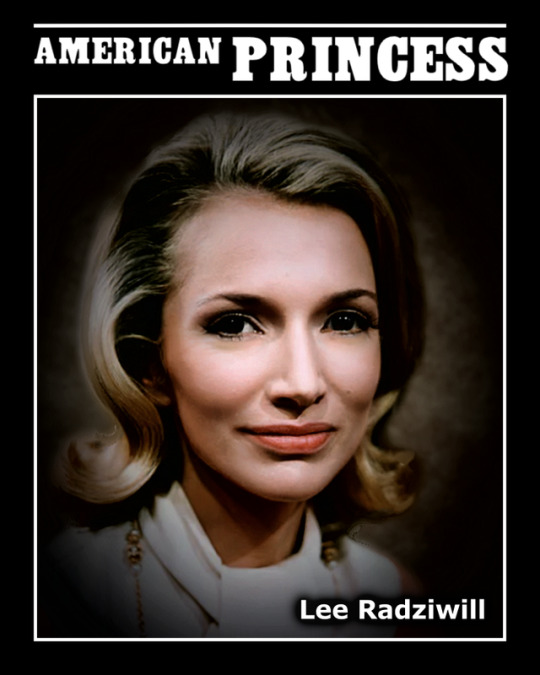
Jackie Kennedy's younger sister Lee Radziwill was born Caroline Lee Bouvier in Southampton, New York. Her second marriage — in 1959, just before JFK officially announced his candidacy for the Presidency — was to Polish prince Stanisław Albrecht Radziwill. Long considered the prettier, more vivacious sister, Lee lived much of her otherwise vibrant life in Jackie's shadow. She had an affair with Aristotle Onassis before he became involved with Jackie and was reportedly furious when her sister married him. Her marriage to Prince Radziwill lasted 15 years and produced two children.
1 note
·
View note
Text
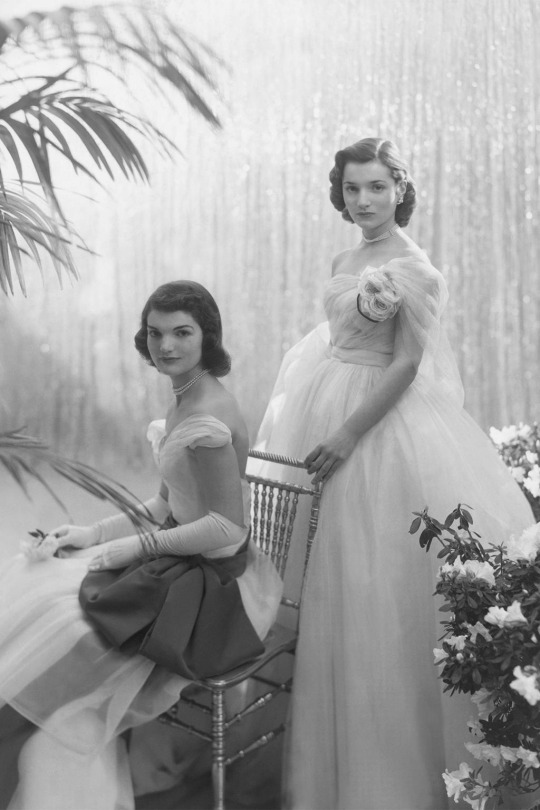
Jacqueline Lee Bouvier (later better known as Jacqueline Kennedy) and her sister Caroline Lee Bouvier (later better known as Lee Radziwill)
0 notes
Photo
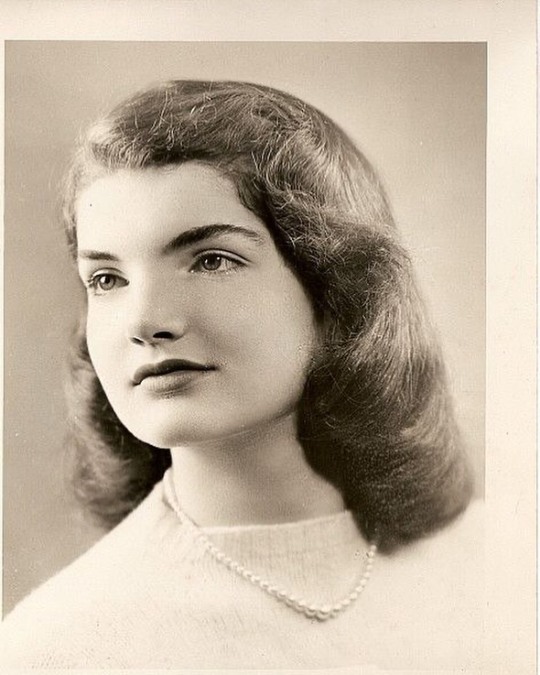
#IrishAmericanHeritageMonth 🇺🇸🇮🇪 Jackie was born on July 28, 1929, at Stony Brook Southampton Hospital in Southampton, New York, to Wall Street stockbroker John Vernou "Black Jack" Bouvier III and socialite Janet Norton Lee.[8] Jackie's mother was of Irish descent,[9] and her father had French, Scottish, and English ancestry.[10][a] Named after her father, Jackie was baptized at the Church of St. Ignatius Loyola in Manhattan; she was raised in the Roman Catholic faith.[13] Jackie's younger sister, Caroline Lee, was born four years later on March 3, 1933.[14] Jackie spent her early childhood years in Manhattan and at Lasata, the Bouviers' country estate in East Hampton on Long Island.[15] She looked up to her father, who likewise favored her over her sister, calling his elder child "the most beautiful daughter a man ever had".[16] Biographer, Tina Santi Flaherty, referred to Jackie's early confidence in herself, seeing a link to her father's praise and positive attitude to her, and her sister Lee Radziwill stated that she would not have gained her "independence and individuality" had it not been for the relationship she had with their father and paternal grandfather, John Vernou Bouvier Jr.[17][18] From an early age, Jackie was an enthusiastic equestrienne who successfully competed in the sport; horse-riding would remain a lifelong passion.[17][19] She took ballet lessons, was an avid reader, and excelled at learning languages. Jackie could speak English, French, Spanish, and Italian.[20] French was particularly emphasized in her upbringing. https://www.instagram.com/p/CMP-sDVl23FKKBfnNI4sb6DXAgatIxIzY8MX9s0/?igshid=1w29s6nl9bu8j
0 notes